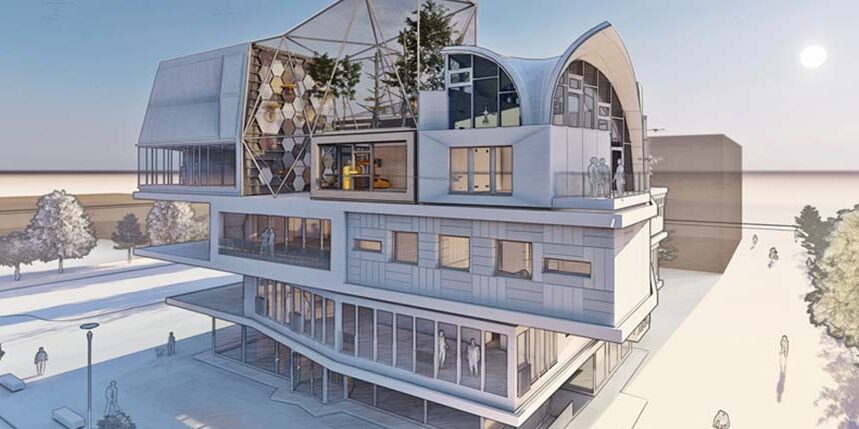NEST receives aviary for drone research

A kind of aviary for research on drones is to be built on the NEST research and innovation building of the Swiss Federal Laboratories for Materials Testing and Research. This DroneHub will be used as a permanent, realistic test environment for various applications.
A DroneHub is being set up on the NEST. As the Swiss Federal Laboratories for Materials Testing and Research(Empa) illustrates in a short video, it resembles an aviary. On a floor space of 90 square metres, a construction of metal tubes and mesh forms a cage with a height of up to eleven metres. According to an Empa release, the final construction will provide test environments for three research fields.
For the first, 3D printing in flight, an experimental wall with interchangeable modules will be used to develop drones that fly and carry out inspection and repair work vertically. “The drones can, for example, detect and repair cracks without the need for elaborate scaffolding or endangering the safety of people,” explains Mirko Kovac, the head of Empa’s Sustainability Robotics research laboratory and director of the Aerial Robotics Lab at Imperial College London.
The second application area, robotic environmental sensing, focuses on the interaction between drones and the environment. “You can place targeted sensors in nature and read the data with regular flights,” says Kovac. This is “very relevant” especially for energy plants such as wind turbines or dams, but also for collecting climate data in impassable and wide-open spaces.
The third research area wants to develop rules and technological standards for the coexistence of robots and humans, for example for interfaces between buildings and flying robots. This concerns, for example, landing sites on or near buildings or the positioning of charging stations.